Shilka, ZSU-23-4
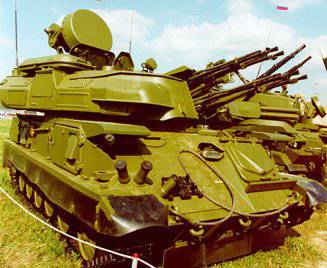 Closed pages stories Our firms are gradually starting to open up. There was an opportunity to talk and write about things that were previously stamped state secrets. Today we want to tell the story of the creation of the sighting system of the legendary anti-aircraft self-propelled unit “Shilka”, adopted exactly 40 years ago (this year is rich at anniversaries!). Before you is a small essay written by two veterans of our company who took part in the creation of the world famous self-propelled gun - Lidia Rostovikova and Elizaveta Spitsyna.
Closed pages stories Our firms are gradually starting to open up. There was an opportunity to talk and write about things that were previously stamped state secrets. Today we want to tell the story of the creation of the sighting system of the legendary anti-aircraft self-propelled unit “Shilka”, adopted exactly 40 years ago (this year is rich at anniversaries!). Before you is a small essay written by two veterans of our company who took part in the creation of the world famous self-propelled gun - Lidia Rostovikova and Elizaveta Spitsyna. With the development of air fleet the experts faced the task of creating means of protecting ground troops from enemy raids aviation. During the First World War, anti-aircraft guns were adopted by a number of European states, including Russia, which were constantly improved as technology developed. Entire anti-aircraft artillery systems were created.
It was subsequently recognized that artillery on mobile self-propelled chassis would cope most successfully with the tasks of protecting troops on the march from enemy aircraft. The results of the Second World War led to the conclusion that traditional anti-aircraft guns are quite effective in dealing with airplanes flying at medium and high altitudes, but are unsuitable for firing at low-flying targets with high speed, since in this case the aircraft instantly goes beyond the shelling sphere . In addition, the explosive shells of large-caliber shells (for example, 76 mm and 85 mm) at low altitudes can cause significant damage to their own troops.
With increasing survivability and speed of aircraft, the effectiveness of small-caliber automatic anti-aircraft guns - 25 and 37 mm also decreased. In addition, due to an increase in the speed of air targets, the consumption of projectiles per aircraft downed several times increased.
As a result, an opinion was formed that, in order to combat low-flying targets, it is most expedient to create a setup with an automatic small-caliber gun and a high rate of fire. This should allow the firing of high accuracy with precise aiming during those very short periods of time when the aircraft is in the affected area. Such a setup should quickly change the pickup to keep track of the target moving at high angular speeds. The most suitable for this purpose was a multi-barreled unit, possessing a much larger than a single-barreled gun, a mass of a second salvo, mounted on a self-propelled chassis.
In 1955, the company’s XB NUMX bureau bureau (this was the name of the Progress plant, which later became part of LOMO), headed by the head of the bureau, Viktor Ernestovich Pikkel, issued a technical task for conducting Topaz research. According to the results of this development, it was necessary to decide on the possibility of creating an automatic all-weather artillery mount on a self-propelled chassis for firing at air targets that would ensure high efficiency of hitting low-flying air targets at speeds up to 825 m / s.
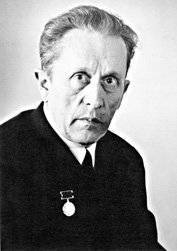
In the process of performing this work by the team of the 825 pb design bureau under the guidance of Chief Designer V.E. Pykel and Deputy Chief Designer VB Perepelovsky solved a number of problems in order to ensure the effectiveness of the artillery being developed. In particular, the choice of chassis was made, the type of anti-aircraft installation, the weight limit of the firing equipment installed on the chassis, the type of targets served by the installation, and the principle of ensuring its all-weather capability were determined. This was followed by the choice of contractors and element base.
During the design studies, produced under the leadership of the Stalin Prize winner, leading designer L.M. Braudze, it was determined the most optimal placement of all elements of the sighting system: radar antenna, anti-aircraft mount, antenna pointing drives, stabilization elements on a single rotating base. At the same time, the question of decoupling the sight and gun line of the installation was rather cleverly solved.
The main authors and ideologists of the project were V.E. Pikkel, V.B. Perepelovsky, V.A. Kuzmichev, A.D. Zabezhinsky, A. Ventsov, L.K. Rostovikova, V. Povolochko, N.I. Kuleshov, B. Sokolov and others.
 V.B. Perepelovsky
V.B. Perepelovsky Formula and structural schemes of the complex were developed, which formed the basis of the design and development work on the creation of the Tobol radio instrumentation complex. The purpose of the work was declared "Development and creation of all-weather complex" Tobol "for ZSU-23-4" Shilka ".
In the 1957 year, after reviewing and evaluating materials on the Topaz research and development project submitted to the customer of the 825 PO Box, he was given a technical task for conducting Tobol OCD. It involved the development of technical documentation and the manufacture of a prototype instrument complex, the parameters of which were determined by the previous R & D “Topaz”. The instrumentation complex included elements of stabilizing the sighting and gun lines, the system for determining the current and advance coordinates of the target, and radar antenna pointing drives.
Components of the ZSU were supplied by contractors to the enterprise of the 825 pb facility, where the general assembly and coordination of the components were carried out among themselves.
In the 1960, in the Leningrad Region, factory ground tests of the ZSU-23-4 were conducted, the results of which showed a prototype for state tests and sent to the Donguz artillery range.
In February, 1961 was visited by plant specialists (N.A. Kozlov, Yu.K. Yakovlev, V.G. Rozhkov, V.D. Ivanov, N.S. Ryabenko, O.S. Zakharov) to prepare for tests and presentation ZSU commission. In the summer of 1961, they were successfully conducted.
It should be noted that, at the same time as the ZSU-23-4, a prototype ZSU, developed by the State Central Research Institute TSNII-20, was tested, and in 1957 the technical assignment for the development of ZSU (Yenisei) was also issued. But according to the results of state tests, this product was not accepted for service.
In 1962, the Shilka was put into service and its mass production was organized at the factories of a number of cities in the USSR.
For two years (1963-1964) the teams of LOMO specialists from the SKN 17-18 and workshops went to these factories to establish mass production and to develop technical documentation for the product.
The first two serial models of the ZSU-23-4 “Shilka” in 1964 were subjected to full-scale tests of radio-controlled model (RUM) to determine the effectiveness of shooting. For the first time in the practice of the world anti-aircraft artillery of one of the Shilok RUM was shot down - the tests ended brilliantly!
In 1967, the USSR State Prize was awarded by the Chief Designer of the ZSU-23-4 instrumentation complex Viktor Ernestovich Pikkel and his deputy Vsevolod Borisovich Perepelovsky, as well as a number of specialists of serial plants and customers for their services in the field of special instrumentation. On their initiative and with their active participation, work was started on the creation of the Shilka.
In 1985, a note was published in the German magazine Soldier and Technique, which contains the following phrase: “In the USSR, the serial production of ZSU-23-4, which lasted 20 for years, was discontinued. But despite this, the installation ZSU-23-4 is still considered the best way to combat high-speed low-flying targets. "
Employees of the company who participated in the creation of "Shilka"
L. Rostovikova, E. Spitsyna
Material provided: Nikolay Vlasov, LOMO OJSC
Attacking ... anti-aircraft gun
First flashed blue rapiers spotlights. Cutting through the total darkness, the rays began a chaotic run across the night sky. Then, as if on cue, they suddenly converged on a dazzling point, tenaciously holding the fascist vulture in it. Immediately dozens of fiery trails rushed to the discovered bomber, high in the sky flashed lights of explosions. And now the enemy aircraft, leaving behind a smoke plume, rushes to the ground. A blow follows, and a booming explosion of unused bombs rolls around ...
That was how the Soviet anti-aircraft gunners acted during the period of the Great Patriotic War during the defense of many of our cities from Luftwaffe bombers. By the way, the highest density of anti-aircraft artillery in protecting, for example, Moscow, Leningrad and Baku was in 8 - 10 times more than in the defense of Berlin and London. In total, over the years of the war, our anti-aircraft artillery destroyed more than 23 thousands of enemy aircraft, and this speaks not only of the self-sacrificing and skillful operations of firing squadrons, their high military skills, but also of the excellent combat qualities of the national anti-aircraft artillery.
A lot of artillery anti-aircraft systems created the Soviet designers in the postwar years. Various samples of this type of guns, which fully meet the modern requirements of warfare, are in service with the Soviet Army and the Navy even now.
... Dust swirls over the field road. The troops make a long march - as prescribed by the plan of training. The columns of military equipment are moving in a never-ending stream: Tanks, armored personnel carriers, infantry fighting vehicles, artillery tractors, rocket launchers - all of them must arrive at the indicated places at exactly the calculated time.
And suddenly - the team: "Air!"
But the columns do not stop, moreover, they increase the speed, increasing the distance between the machines. At some of them massive towers began to move, the trunks went up sharply, and now the shots merge into a solid roaring rumble ... This is firing at the “enemy” anti-aircraft installations ZSU-23-4, covering the troops in movement.
Before we begin the story about this interesting armored car, we will make an excursion to the ... shooting range, yes, to the usual shooting range. surely every boy once shot a pneumatic rifle. Many, apparently, tried to hit and moving targets. But few people thought that the brain in this situation for a fraction of a second calculates the most difficult mathematical task. Military engineers say that this solves the prognostic problem of approaching and meeting two bodies moving in three-dimensional space. In relation to tiru - tiny lead bullet and target. And it would seem so simple; caught a moving target on the front sight, took out the aiming point and quickly, but smoothly pulled the trigger.
At low speeds of movement of the target, you can get into it with just one bullet. But in order to hit, for example, a flying target (remember the so-called bench shooting, when athletes are shooting at the skeet, launched with great speed by a special device), one bullet is not enough. At such a goal shoot at once several - the charge fraction.
In fact, a space charge moving in space consists of dozens of destructive elements. It is worth one of them to hook the plate - and the target is hit.
We needed all these seemingly abstract reasoning to figure out how to get into a high-speed aerial target, for example, a modern fighter-bomber, whose flight speed can exceed 2000 km / h! Indeed, this task is difficult.
Serious specifications have to consider designers zenith weapons. However, with all the complexity of the problem, engineers solve it using, if I may say so, the “hunting” principle. Anti-aircraft guns should be rapid-fire and, if possible, multi-barreled. And management is so perfect that in a very short period of time it was possible to make the most number of aimed shots on the target. Only this will allow to reach the maximum probability of defeat.
It should be noted that the anti-aircraft weapon appeared with the emergence of aviation - after all, already at the beginning of World War I, enemy aircraft posed a real threat to both troops and rear facilities. Initially, combat airplanes were fought using ordinary guns or machine guns, setting them up in special devices so that they could shoot upwards. These measures proved ineffective, which is why the development of anti-aircraft artillery subsequently began. An example is the 76-mm anti-aircraft gun, created by Russian designers in the 1915 year at the Putilov factory.
Simultaneously with the development of air attack, anti-aircraft artillery was also improved. Great success was achieved by Soviet gunsmiths who had created anti-aircraft guns with high efficiency of fire before the Great Patriotic War. Its density also increased, and the fight with enemy aircraft became possible not only during the day, but also at night.
In the postwar years, anti-aircraft artillery was further improved by the appearance of rocket weapons. At one time it even seemed that with the onset of the era of super-high-speed and super-high-flying aircraft, the barrel installations had become obsolete. However, the barrel and the rocket did not deny each other, it just took to distinguish between the areas of their application ...
Now let's talk more about ZSU-23-4. This is a self-propelled anti-aircraft installation, the figure 23 means the caliber of its guns in millimeters, 4 - the number of trunks.
The installation is designed to provide anti-aircraft protection of various objects, combat formations of troops in a head-on battle, columns on the march from enemy aircraft flying at 1500 heights. The ZSU-23-4 can fire at ground targets as well as at by air. In this case, the effective range of fire is 2500.
The basis of the firepower of the self-propelled unit is the quadruple 23-mm automatic anti-aircraft gun. The rate of fire - 3400 shots per minute, that is, every second A stream of 56 shells rushes towards the enemy! Or, if we take the mass of each of the shells equal to 0,2 kg, the second stream of this avalanche of metal is about 11 kg.
As a rule, shooting is carried out in short bursts - 3 - 5 or 5 - 10 shots per barrel, and if the target is high-speed, then up to 50 shots per barrel. This makes it possible to create a high density of fire in the area of the target for its reliable destruction.
Ammunition consists of 2 thousands of shots, and the shells are used two types - high-explosive fragmentation and armor-piercing incendiary. Nutrition trunks tape. Interestingly, the ribbons are equipped in a strictly defined order - there are one armor-piercing incendiary per three high-explosive fragmentation projectiles.
The speed of modern airplanes is so high that even the most modern anti-aircraft guns cannot do without reliable and high-speed aiming equipment. That is what has -ZSU-23-4. Exact instruments continuously solve the very predictive task of the meeting, which was discussed in the example of air rifle shooting at a moving target. In self-propelled anti-aircraft guns, the barrels are also directed not to the point where the air target is located at the moment of the shot, but to the other one, called pre-empted. She lies ahead - on the path of movement of the goal. And at this point the projectile must fall simultaneously with it. It is characteristic that the ZSU shoots without zeroing - each queue is calculated and maintained as if I had a new goal every time. And immediately to the defeat.
But before hitting a target, it must be detected. This task is assigned to the radar - radar. She searches for a target, detects it, and then automatically accompanies the enemy's air. Radar also helps to determine the coordinates of the target and the distance to it.
The antenna of the radar is clearly visible in the drawings of the self-propelled anti-aircraft gun - it is mounted on a special column above the turret. This is a parabolic "mirror", but the observer sees only a flat cylinder ("washer") on the tower - the antenna housing of a radio transparent material that protects it from damage and precipitation.
The very same aiming task is solved by the PSA - a calculating device, a kind of brain of an anti-aircraft gun. In essence, this is a small-sized on-board electronic computer, which solves the prognostic problem. Or, as military engineers say, the PSA generates lead angles when aiming a cannon at a moving target. This is how a shot line is formed.
A few words about the group of instruments that form the stabilization system for the line of sight of the shot line. The effectiveness of their actions is such that, no matter how hard the ZSU throws from side to side while moving, for example, on a country road, no matter how it shakes, the radar antenna continues to track the target, and the gun barrels are precisely directed along the line of the shot. The fact is that the automatics remembers the initial guidance of the radar antenna and the gun "and simultaneously stabilizes them in two directions of guidance - horizontal and vertical. Consequently, the self-propelled gun is capable of accurate aimed shooting while moving with the same efficiency as from the spot.
By the way, neither the atmospheric conditions (fog, poor visibility) nor the time of day influence the accuracy of firing. Thanks to the radar, the anti-aircraft gun is operational under any meteorological conditions. And it can move even in complete darkness - an infrared device provides visibility At a distance of 200 - 250 m.
The crew consists of only four people: the commander, the driver, the search operator (gunner) and the range operator. The designers have very successfully arranged the ZSU, thought out the working conditions of the crew. For example, to transfer a gun from a marching position to a combat position, it is not necessary to leave the installation. This operation is performed directly from the site by the commander or search operator. They control the cannon and shoot. It should be noted that much is borrowed from the tank - this is understandable: the self-propelled gun is also an armored tracked vehicle. In particular, it is equipped with navigation tank equipment so that the commander can constantly monitor the location and the path traveled by the ZSU, and also, without leaving the car, navigate the terrain and plot courses on the map,
Now about the safety of crew members. People are separated from the cannon by a vertical armored partition that protects from bullets and shrapnel, as well as from flames and powder gases. Particular attention is paid to the functioning and combat operations of the machine under the conditions of the use of nuclear weapons by the enemy: the anti-nuclear defense equipment and fire fighting equipment are included in the ZSU-23-4 design. The FVU takes care of the microclimate inside the anti-aircraft gun, a filtering unit capable of cleaning the outside air from radioactive dust. It also creates an overpressure inside the combat vehicle, which prevents polluted air from getting in through possible gaps.
High enough reliability and survivability of the installation. Its units are very sophisticated and reliable mechanisms, it is armored. Maneuverability qualities of the machine are comparable with the corresponding characteristics of the tanks.
In conclusion, we will try to simulate a battle episode in modern conditions. Imagine that ZSU-23-4 covers a column of troops on the march. But here the radar, continuously conducting a circular search, detects an air target. Who is it? Yours or someone else's? Immediately should be a request for ownership of the aircraft, and if there is no answer to it, the decision of the commander will be the only one - fire!
But the enemy cheats, maneuvers, attacks the anti-aircraft gunners. And in the midst of the battle a shrapnel cuts off the antenna of the radar station. It would seem that the "blinded" anti-aircraft gun is completely incapacitated, however, this and even more complex situations are provided by the designers. A radar station, a counting device, and even a stabilization system may refuse - the installation will still be combat-ready. The search operator (gunner) will fire using an anti-aircraft sight, an understudy, and lead warnings along angle rings.
That's basically all about the ZSU-23-4 combat vehicle. Soviet warriors skillfully manage modern technology, mastering such military specialties, which appeared recently as a result of the scientific and technological revolution. The clarity and consistency of their work allows them to successfully resist almost any air enemy.
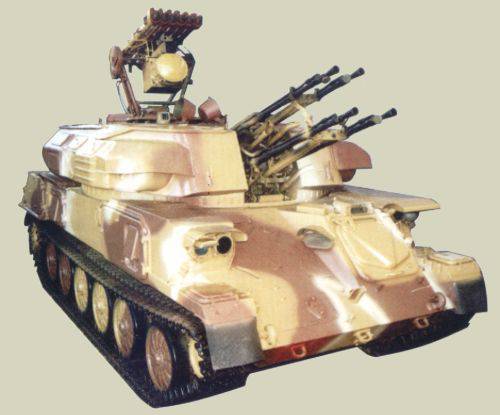
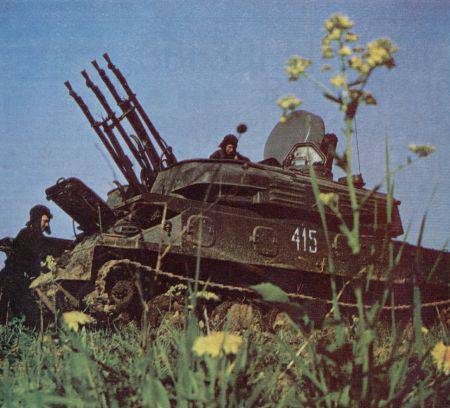
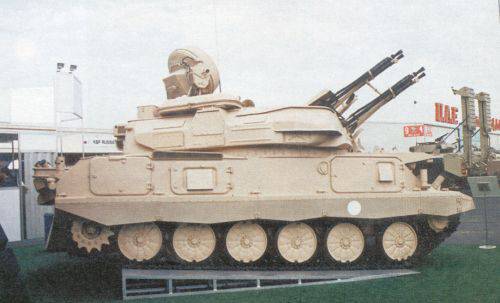
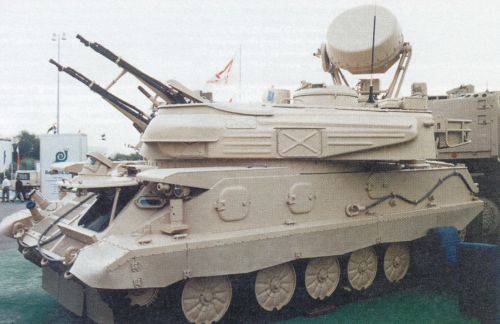
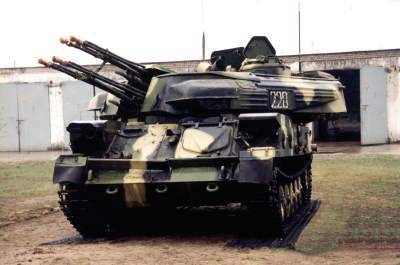
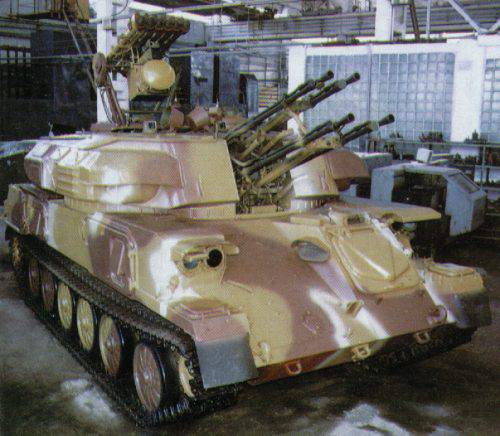
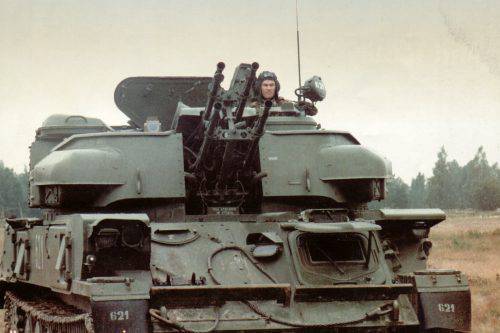
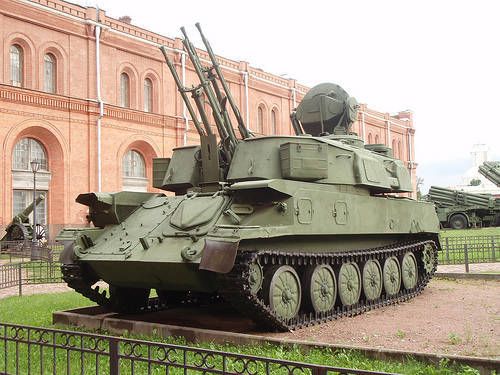
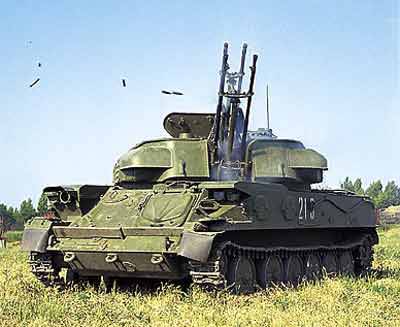
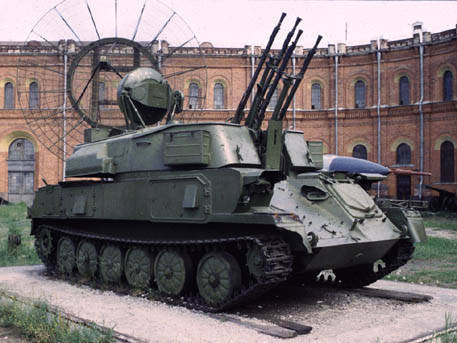
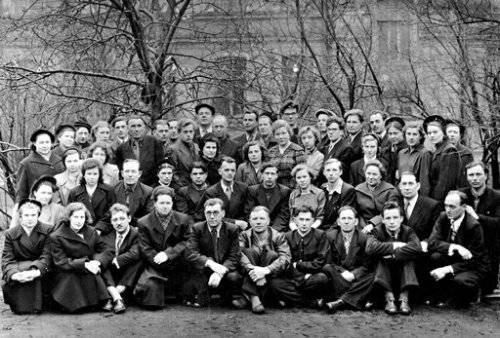
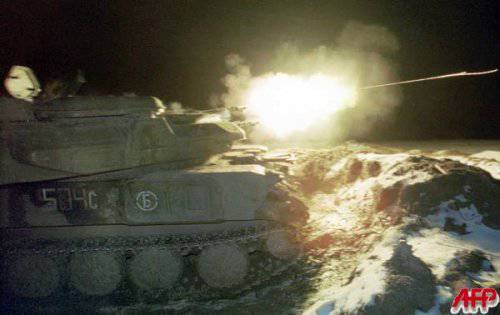
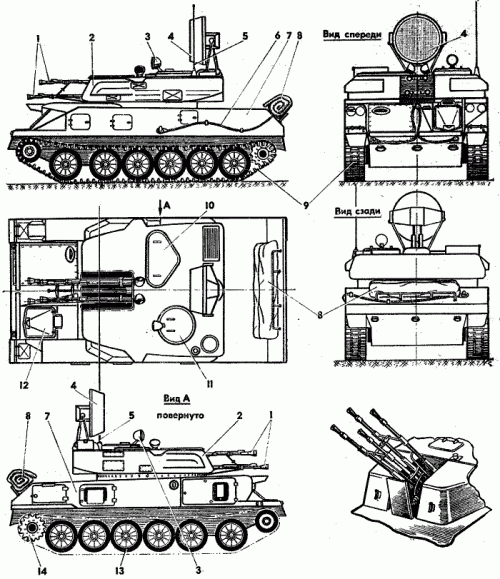
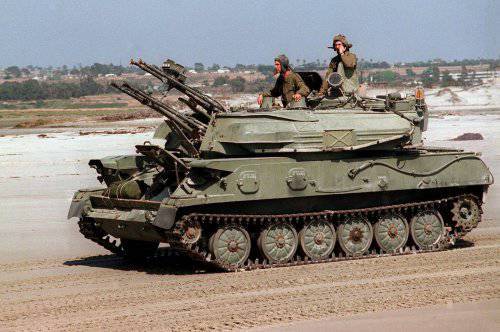

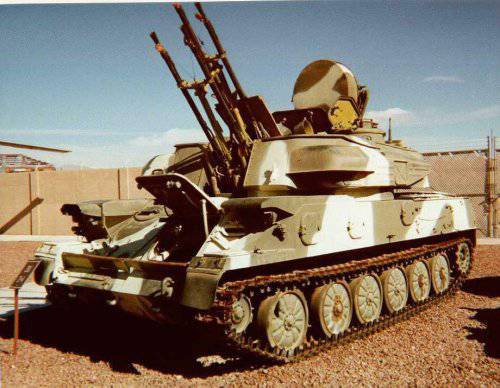
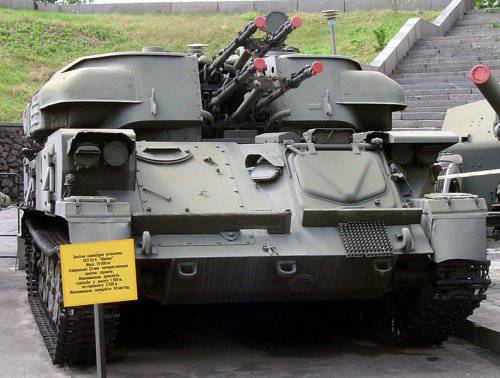
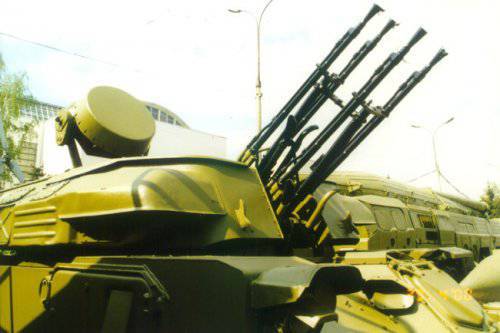
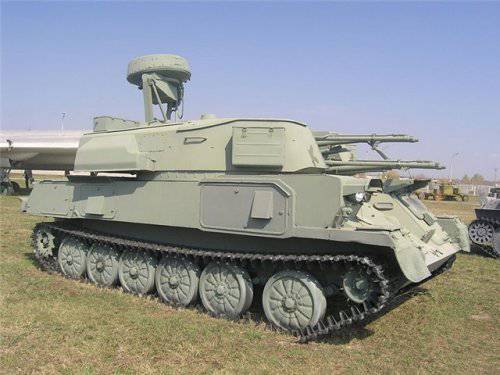
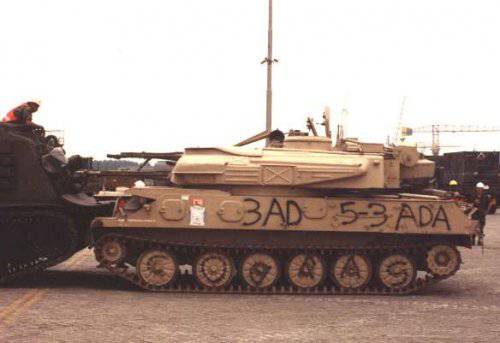
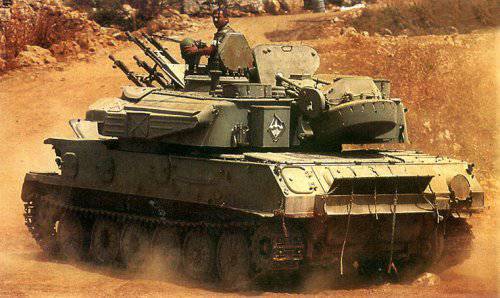
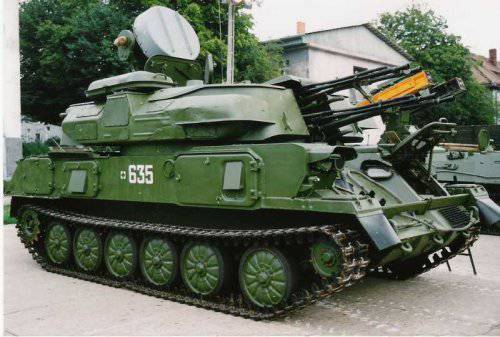
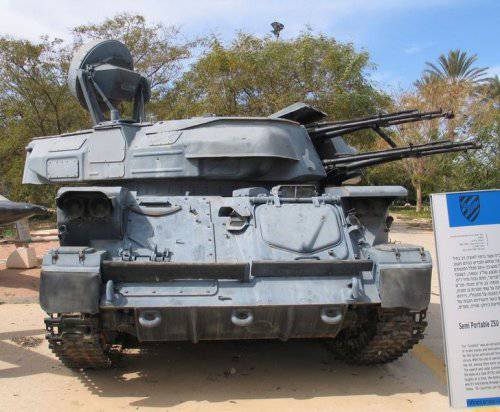
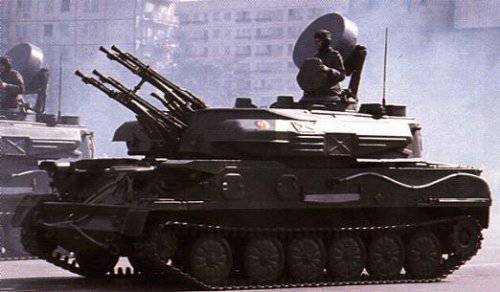
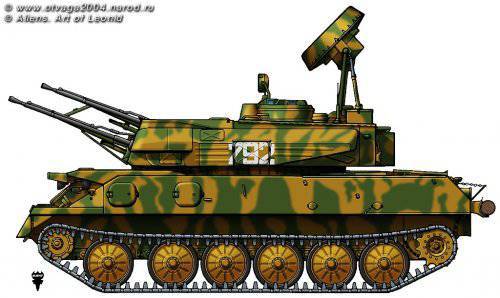
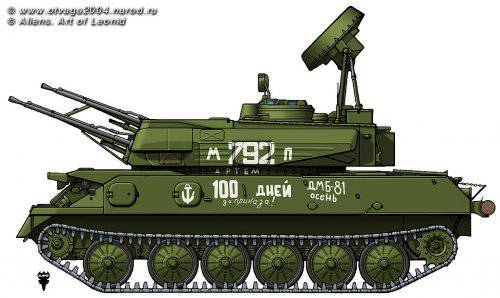
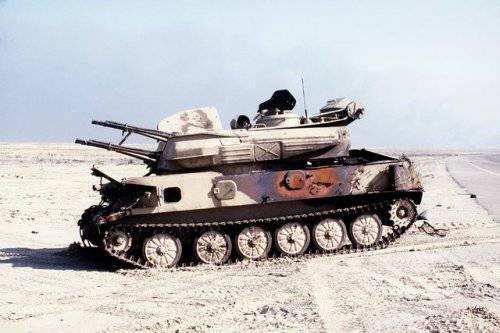
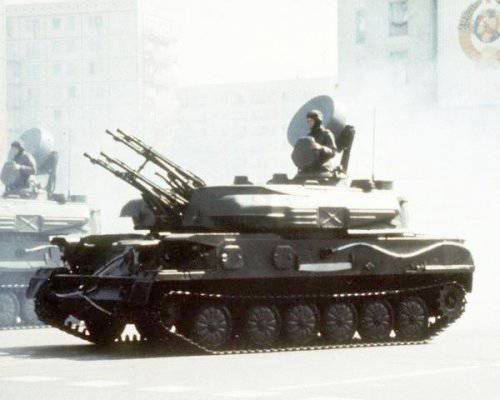
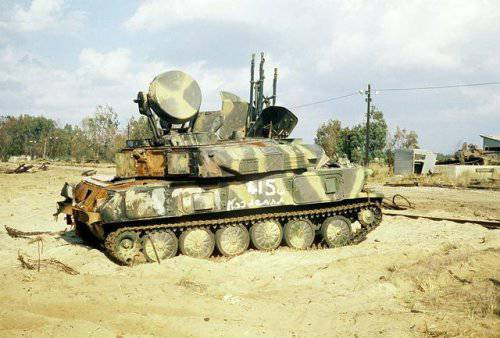
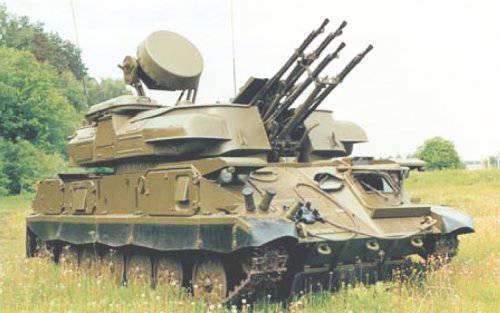
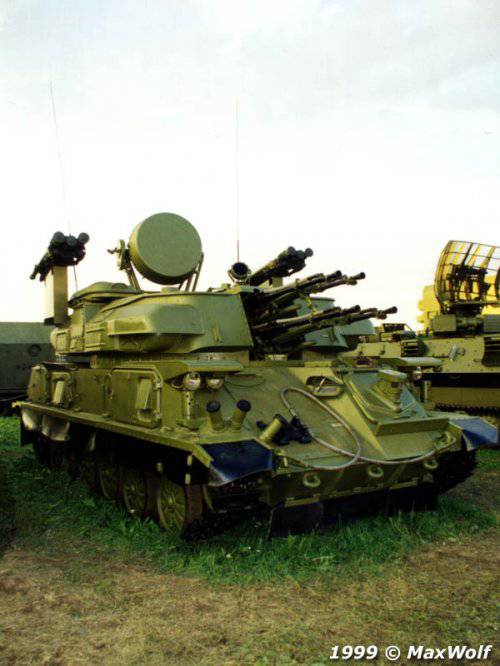
Information